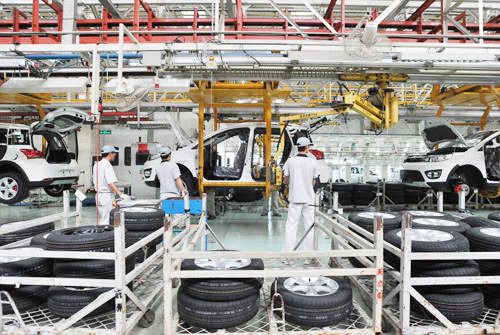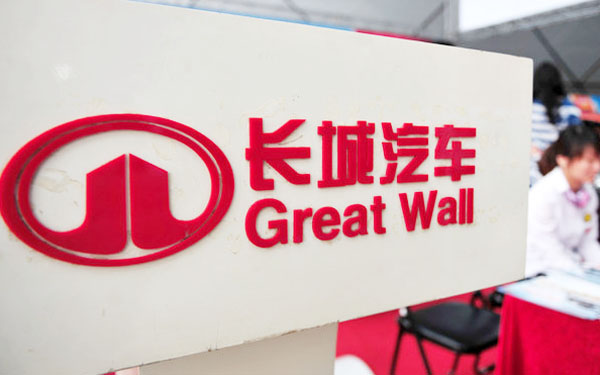While domestic carmakers are ceding ground to foreign companies, Great Wall Motors defies the norm
When Wei Jianjun took charge of Great Wall Motors in 1990, the privately owned automaker, based in Baoding, North China's Hebei province, had been in the red for years. Wei decided to focus the company on pickup trucks, which is still a "niche vehicle" in the Chinese market.
|
 Workers at a Great Wall Motors factory. [Photo / bjreview.com.cn] |
Wei's decision has helped Great Wall vehicles win high esteem in the auto world. Great Wall Motors has outshined its competitors with its Haval SUV, the champion of the Chinese SUV market for nine consecutive years, and its Wingle pickup, the top seller among Chinese pickups for 14 years in a row.
Without the backing of the Chinese Government and State-owned banks, the company is now debt-free and has been listed on both the mainland and Hong Kong stock exchanges.
Against adversity
A slowing economy - coupled with the phasing out of policies to stimulate consumer spending and auto purchase limits in some megacities - has put the brakes on China's auto industry, sending car sales to a historical low after explosive expansion. According to statistics from the China Association of Automobile Manufacturers, from January to July, total vehicle sales rose just 3.6 percent after an anemic growth of 2.5 percent in 2011, setting China up for its slowest two years of growth since the late 1990s.
Despite tough conditions facing domestic manufacturers, a handful of companies have managed to rise above the challenges. Great Wall Motors is one such company. According to statistics from the China Passenger Car Association, Great Wall Motors sold a total of 487,000 vehicles in 2011, 22.5 percent higher than in 2010, nudging itself into the top 10 car sellers in China. Its business returns and net profit for 2011 totaled 30.14 billion yuan ($4.81 billion) and 3.56 billion yuan respectively, representing year-on-year growth of 31.13 percent and 25.77 percent, well above the declines seen in the industry during the same period.
Related reading: Great Wall Motor says H1 profits up 30%
Great Wall's success is due to its "category strategy". Its advantage in the SUV, pickup and sedan markets has given its brand an added boost. In 2011, the manufacturer sold 187,500 sedans, 147,300 SUVs and 121,700 pickup trucks. "Great Wall Motors will continue to focus on strengthening Haval and Wingle as the leading brands in China's SUV and pickup truck market, and push the Great Wall sedan as the king of family cars," said Shang Yugui, head of the carmaker's media relations.
The carmaker has developed a strategy called "three highs" - high-quality, high-tech and high-performance - in an effort to alter the impression of domestic cars, often seen by consumers at home and abroad as low grade and unsafe.
|
 Great Wall Motor's booth is seen at an auto expo in Changzhou, Jiangsu province. The largest sport utility vehicle producer in China announced on July 25 that its first-half profit would jump 30.29 percent year-on-year. [Photo / CFP] |
The aim of the strategy is to meet the New Car Assessment Program standards for safety, European and American standards in energy and emission reductions, German standards in operational stability and Japanese standards in durability.
This year, Great Wall Motors plans to unveil five new models, one of which is the 1.5 L turbocharged Haval H6 SUV, which made its official Chinese debut on Sept 29.
With the 3 billion yuan ($477.3 million) invested in research and development in the past five years, Great Wall Motors will spend another 5 billion yuan ($795.5 million) over the next five years to close the gap with its overseas rivals in technology rather than focusing on the ruthless cost-cutting favored by other domestic carmakers.
With an R&D team of more than 5,000, construction of the company's new research center is expected to be completed in late 2012, focusing on preliminary research, appearance design, conceptual design and simulation design.
At the same time, a new production base is under construction and slated for operation in 2014. When completed, the two projects with an investment of more than 20 billion yuan ($3.182 billion), will undoubtedly give a leg up to its R&D capability.
